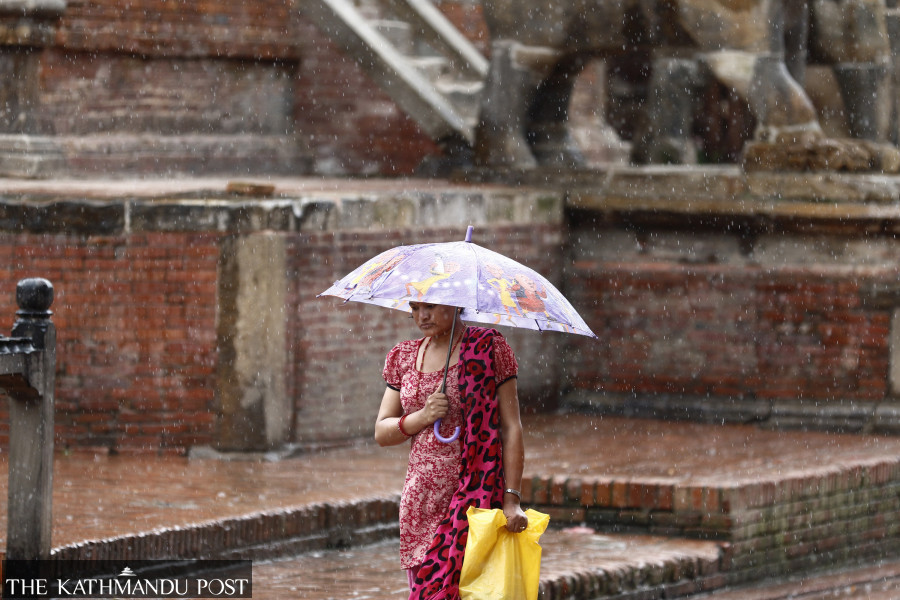Editorial
Enter monsoon
Experts predict above-average rains and temperatures. It’s time to prepare for disasters.
When it arrives, it can bring both bounty and bane. However, due to a changing climate, monsoons in recent times have invariably resulted in more hardship than help. This monsoon, which arrived in Nepal on Monday, three days ahead of the usual date, will certainly buoy farmers and provide much-needed relief from the blistering heat, but concerns over its severity still loom large. Experts have predicted above-normal rains and above-average maximum and minimum temperatures. As this will exacerbate floods, landslides and epidemics, disaster preparedness becomes crucial.
Our responses to natural disasters have consistently fallen short. Governments come and go, but the same pattern repeats every year, and hundreds of lives, and a whole lot of properties and physical infrastructure are left at nature’s mercy. Not that the country has no plans and policies for disaster preparedness. This year, as in previous ones, the National Disaster Risk Reduction and Management Authority has devised the Monsoon Preparedness and Response Plan, which is commendable. The necessary logistics and emergency relief materials have also been stockpiled in all provinces, according to officials. The problem, however, is with the execution of these plans.
This monsoon is estimated to put 1.81 million people and 412,000 households at risk, and require 18,000 rescues. These numbers are large, suggesting the necessity for a comprehensive response to disasters and ensuring that relief programmes reach the most vulnerable and needy. Lack of effective coordination between federal, provincial and local levels has also caused several problems during disasters. Local governments play a big role as primary rescuers in floods and landslides, but they are still far short in human and financial resources.
The examples from the earthquake-devastated Rukum West, Sindhupalchowk and several other places highlight how Nepal fails to rehabilitate the disaster-displaced people for long periods. The residents of Rukum West are still obliged to live in houses with cracks and fissures, and experts warn that these houses could be badly damaged this monsoon. There is also high risk to those living in high landslide and flood prone areas. Unless we design approaches that include not only immediate relief programmes but also year-round relocation, rehabilitation, monitoring and study, people will continue to suffer. Also, proactive measures like public awareness and early warning should be strengthened.
Moreover, monsoons are notorious for water- and vector-borne diseases, including dengue, cholera and typhoid. Dengue cases are already being reported from different parts of the country and the caseload will likely increase during and after the monsoon. Water resource contamination has surged in the past few months, leading to a higher number of water-borne disease cases in hospitals. During the monsoon preparedness, the authorities shouldn’t overlook these epidemics and focus particularly on areas that are more prone to diseases and, therefore, need timely healthcare intervention and workers.
A coordinated effort from health, home, urban development and water supply ministries can help make this monsoon a lot safer. In the long run, we should find ways to mitigate the effects of climate change, which has exacerbated our climatic conditions and intensified disasters. Understanding the impact of climate change and human activities on weather will help us better prepare for future monsoons and the disasters that come in their wake.




 16.12°C Kathmandu
16.12°C Kathmandu














